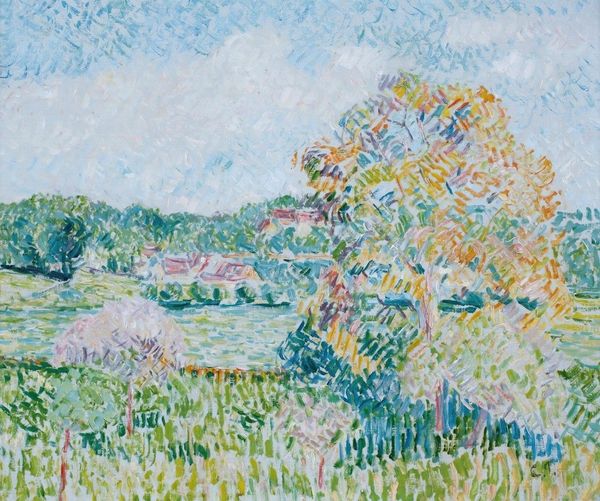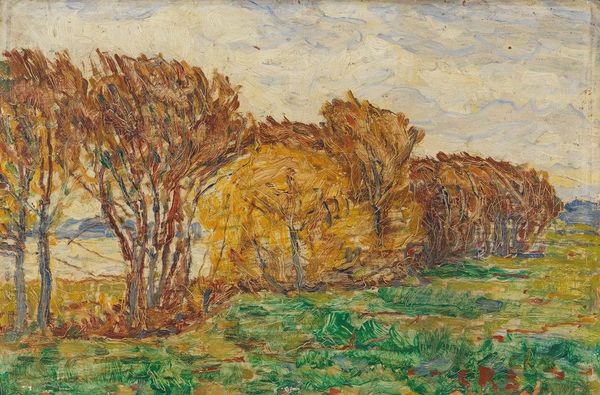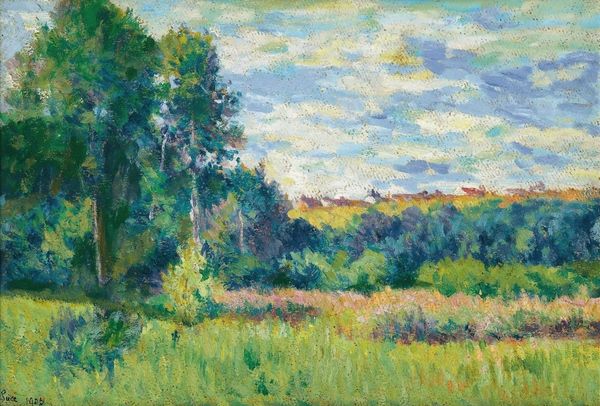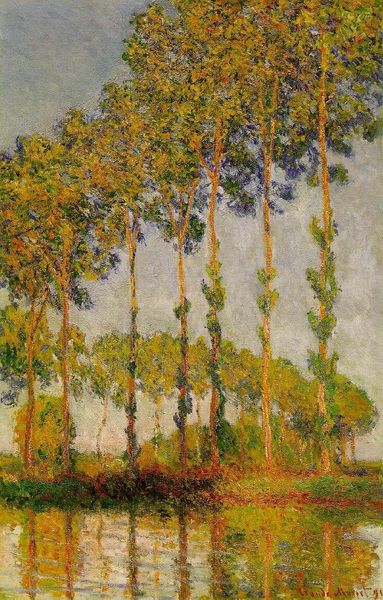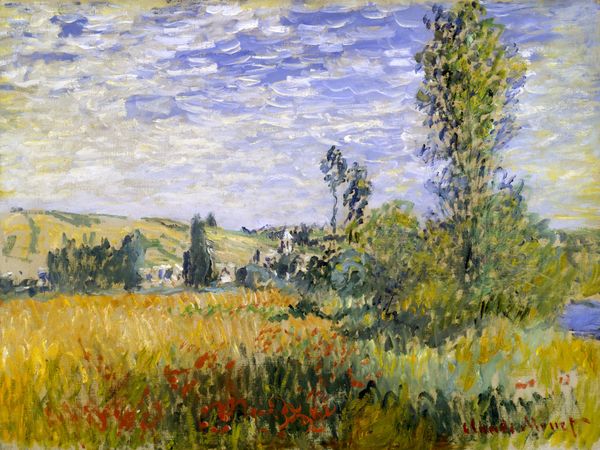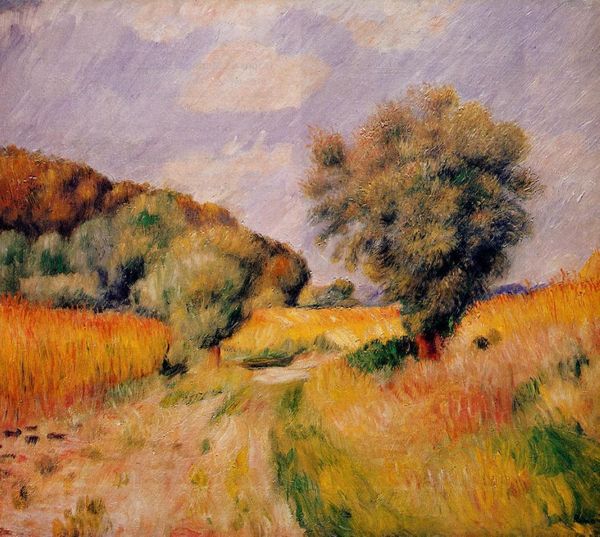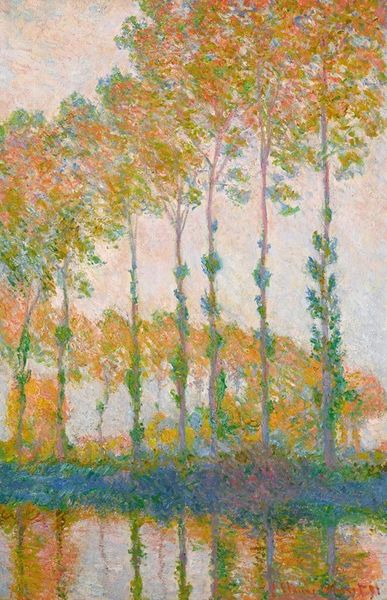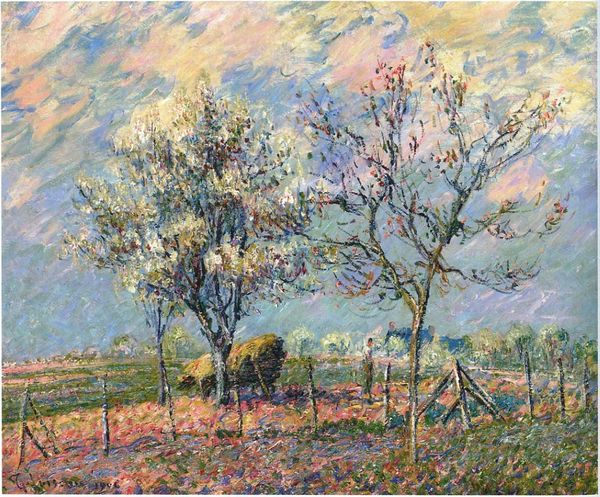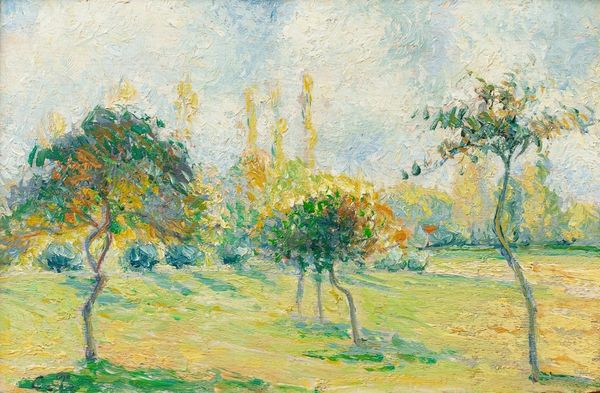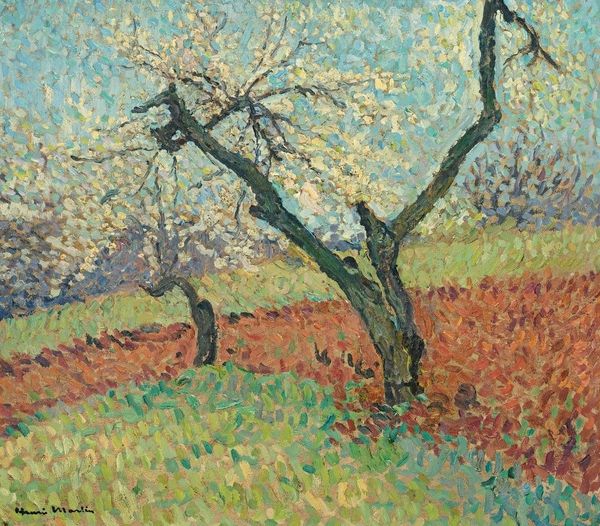
painting, plein-air, oil-paint
#
painting
#
impressionism
#
plein-air
#
oil-paint
#
landscape
#
impressionist landscape
#
figuration
#
post-impressionism
#
realism
Copyright: Public domain
Curator: Camille Pissarro's "Springtime at Eragny (study)", created in 1890, captures a rural landscape bathed in the nascent light of the season. It is part of a series painted en plein air. What’s your first impression? Editor: A delicate harmony. The brushstrokes are so light, so broken. It evokes a feeling of the fleeting beauty found within the natural world, but also the hard labor that rural folk were made to partake in under harsh conditions. Curator: The choice of Eragny as his subject is crucial. Pissarro moved there in 1884. He sought an alternative to the industrial centers of modernity in favor of more accessible landscapes that rural peasants could easily traverse in search of survival and food, the lack of accessibility to which could define how much food those rural people would eat and how little. The canvas presents a rural scene through what has been labeled as an 'impressionist' style but can also be considered deeply post-impressionist with visible marks. The visible and crude materiality of his impasto reveals much about the socio-political roots and background of labor for which this canvas came into existence. Editor: I am captivated by the texture of the paint, its very physicality. How the impasto mimics the burgeoning life of springtime itself. This landscape is made of carefully laid strokes, applied layer by layer, which really draws me to contemplate the repetitive physical gestures necessary to build this image, the literal labor of applying paint. Each dab, each stroke, mimics the repetitive physical movement performed by agricultural laborers as they plant new fields and gather natural foods for cooking and feeding their starving relatives in this particular landscape. This reveals much about labor conditions. Curator: Indeed, Pissarro was concerned with rural realities, which can be tied to his anarchist political views and that of the working classes as a whole. By engaging with the Post-Impressionist landscape genre in a non-conventional way, his focus was on themes that intersect in political movements: labor, economic injustice, accessibility of space to rural populations... and the need for collective organization to remedy them. This work speaks to these issues on multiple layers. The brushwork could even be understood as representing those people trying to take a hold of new beginnings and possibilities while trapped within an economic-social landscape controlled by colonial, conservative, anti-progressive social structures. Editor: It is tempting to see an optimistic picture given the 'Springtime' reference, but, when delving deeper, the conditions that shape its making speak a broader story of socioeconomic hierarchies and how those affect both those whose hands produced it, but also the image of these rural landscapes it is intending to reproduce in front of the world for global capitalist consumption and distribution through museums. Curator: Seeing "Springtime at Eragny" this way offers such valuable insight on Pissarro's artistic intention. Editor: This artwork is, above all, a testament to materiality and working conditions. I am thankful for how illuminating your point of view is too!
Comments
No comments
Be the first to comment and join the conversation on the ultimate creative platform.
